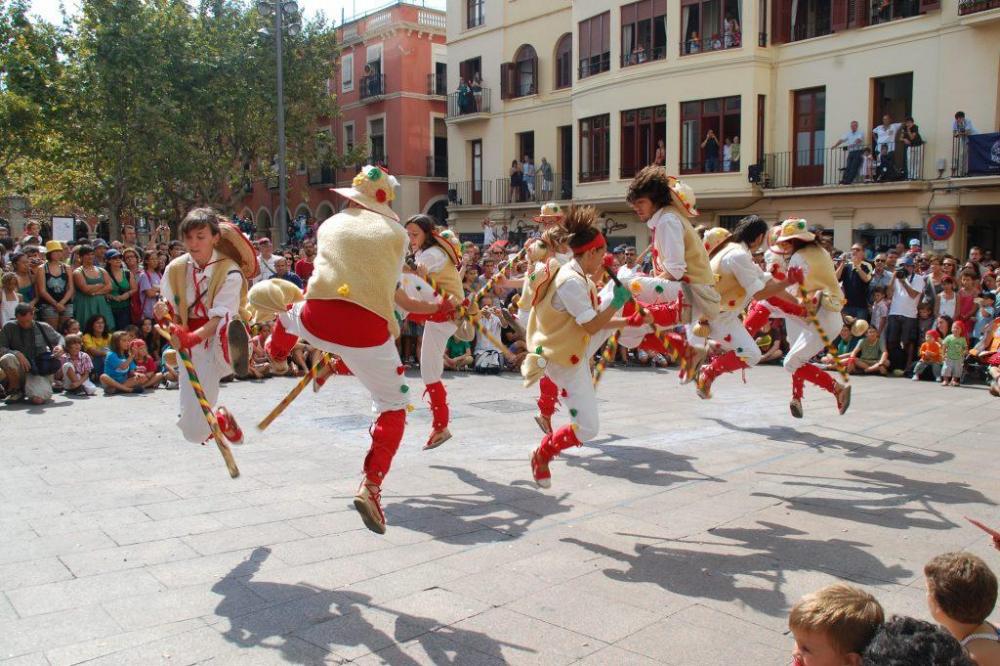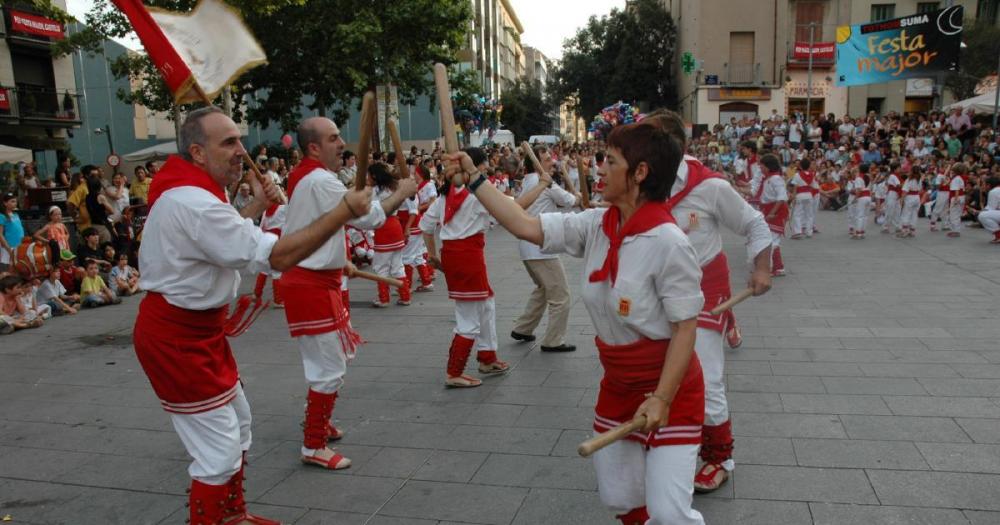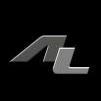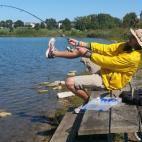Search the Community
Showing results for tags 'orchestration'.
-
Hello, I am new to composition. Can anyone make a list of steps or concepts to learn orchestration? If this is a dumb question, I would appreciate any advice anyone has for learning orchestration. I am specifically looking to write orchestral music. Also if there are any resources or books that helped you learn orchestration, can you list some of them here?
-
- orchestration
- instrumentation
-
(and 1 more)
Tagged with:
-
First thing you'll note about this... this is NOT the 8-bit-Evolution challenge. We figured we'd let that one settle for a while. Instead, this will be a general video game orchestration competition for a game that already exists: Chrono Trigger. We thought it'd be good to branch out with our competitions a little bit and are excited to see the results of this! Here is the link to the intro cutscene entrants will be scoring for: https://www.youtube.com/watch?v=hOmgIZZuI68 Purpose and Expectations: 1. Write a score that accompanies the visuals in this intro. It should try to invoke the same sort of adventurous feeling as the original score. /10 2. Synching is not easy. I'll accept some issues with synching, but in general the music should match the scene. /10 3. Does it sound like this could be played in real life? In other words, does the orchestration seem feasible? /10 4. All entries will be played for a person who has not played the game before and also has little formal music education. Did you get them excited to play the game? /10 TOTAL: /40 Note: Sound effects in the original cutscene will not be taken into account. Entrants will signal their intent to enter by responding to the comment thread on this topic. Provided this gains enough attention, I'll open another topic for entrants to post their entries. Entrant: 1. SallyTheSeabird 2. LostSamurai 3. Between Skies 4. fishfry 5. Mark Paul Entrants can now sign up whenever they'd like before the due date. Due Date for Final Entry: TENTATIVE (12/20) Good luck!
- 32 replies
-
- 1
-

-
- chrono trigger
- orchestration
-
(and 1 more)
Tagged with:
-
DEBUSSY, in the Prelude to the Afternoon of a Faun. Let's just focus on the beginning. To begin with, it is a small orchestration, but rare: there are two oboes + an English horn, two harps... The symphonic poem is based on a melody first exposed by the flute, then re-exposed several times in which it is reharmonized. Debussy's great achievement here, or one of them, is how to make a flute alone, in its low register (which is very weak) and also on piano, to be heard and stand out among the rest of the orchestra... Let's hear it, First we hear the flute alone and at the end of the phrase a transition with the harp and winds. At the rehearsal position marked 1, at approximately 1:03.... is the first harmonization and that is what we are going to refer to. How does Debussy make the flute sound so clear, even though the rest of the orchestra is in pp? There are several things that contribute to this: 1. The dynamics in pp. 2. The tremolando of the strings, which weakens the sound. 3. The tremolando in sul tasto (sur la touche), which makes the sound less bright. 4. Assigning for the bass only two double basses. 5. But the most important thing is the non-interference of the space, of the register. This scheme summarizes everything: the lowest note of the flute is a G natural, and the highest note of the rest of the orchestra is an F# (clarinets and tremolo violins). This way, even though the flute is in a low and weak register, it has all its space to sound on its own. Wonderful.
-
Video game music differs in many ways from film music. While a film composer can follow the scenes from shot to shot, in video games, this is impossible since events occur in real time, generating quasi-randomly. (Except, of course, for pre-rendered frames.) This is why the background music for video games often consists of one or more loopable tracks for each mood, key moment, activity, etc. There are tracks specifically for battles, different locations, or rooms, often even a more dynamic combat music for boss fights, and the list could go on. These tracks reflect the mood and emotional scale of the respective situations. In this kind of music, it's essential for the finished track to be loopable, as it's unpredictable how long a battle will last or how long a player will stay in a certain location. I've just created loopable "combat music" for an action/adventure game, and I'll briefly introduce its steps. Basic Characteristics of the Music When composing music for any media product, it's always important to consider the emotions carried by the specific event, location, and characters, as well as the genre of the work itself. In relation to this, the following must be considered: orchestration (with particular attention to the number of instruments sounding simultaneously) tempo volume articulations (the manner in which instruments are played) melody/chords I've decided to use symphonic orchestral instruments with epic drums for the demonstration. For their sound, I've employed the following Native Instruments – Kontakt libraries (not paid promotion, I use these libraries regardless): Audiobro – Modern Scoring Strings Cinematic Studio Brass Orchestral Tools – Berlin Woodwinds Laboratory Audio – Strikeforce (epic drums) Keep Forest - Ferrum HybridTwo – Project Chaos Since our hypothetical game falls into the action/adventure genre, I thought that the grandeur of symphonic music would suit the display of the game's emotional/mood spectrum. Additionally, I used epic drums considering that this is combat music. The tempo is pretty high, it's 150 bpm. Strings The strings mostly play in staccato, while the violas, cellos, and double basses occasionally play in legato. Staccato, along with the tight rhythm, is suitable for creating tension, which is essential for this type of music. The string section can be heard here. (Unfortunately, I couldn't embed this track with a player, so click on the link, and it'll open in another tab. And of course, you don't have to purchase these tracks, I just didn't find another opportunity for some reason than bandcamp.) https://olivercomposer.bandcamp.com/track/action-adventure-game-strings Brass The trombones play during the introductory theme, while the horns play the main melody during the main theme. The dramatic sound of the brass instruments also enhances the mood. The trumpets play the main melody one octave higher than the trombones and also play chords. https://olivercomposer.bandcamp.com/track/action-adventure-game-brasses Woodwinds The woodwinds are present only as accompanying instruments. In most parts of the music, the first oboe and first clarinet play together with the strings. Additionally, the passage bridging the secondary theme and main theme is played by the flute and piccolo. The clarinet duplicates the secondary theme's trombone melody an octave higher. https://olivercomposer.bandcamp.com/track/action-adventure-game-woodwinds Drums Although this is combat music, it would be a mistake for all drums to play at all times. Therefore, in the secondary theme, only these hi-hat-like drums are heard. This amplifies the contrast between the main theme and secondary theme, highlighting the main theme. https://olivercomposer.bandcamp.com/track/action-adventure-game-drums Loopability As I mentioned earlier, loopability is crucial for most video game music. It's often not easy to solve this problem, but there are a couple of tricks that can make things easier. The first one is to use roughly the same instruments at the beginning and end of the music (in most cases, exactly the same). The other trick, as you can hear in my music, is that the first and last secondary themes complement each other; the first secondary theme (roughly the first six seconds) poses a musical question, and the last six seconds provide an answer. If you have the opportunity, import the file into a game engine (Unity, Unreal, etc.) and see for yourself! 😊 And now, all sections together Finally, the music is complete in its entirety. 😊 https://olivercomposer.bandcamp.com/track/action-adventure-game-full Possibilities for Further Development Video game music can build vertically and horizontally. Vertical building usually involves turning instrument tracks on and off. For instance, having the same music with drums and without drums. The developer decides which one to use in which situation. Horizontal development is excellently exemplified by concluding the music or carrying the variations of the musical theme into another related piece. By using these methods, the game developer can handle the auditory material of various in-game situations more flexibly. I plan to expand on this topic in another article. If you enjoyed the content of the article, please like, share, and feel free to provide feedback in the comments! Follow for similar content! You can download all of the wav files from here: https://drive.google.com/drive/folders/1-9UMuzjTp0GprPrpTvMiiunE4rJ0HM40?usp=sharing Have a great day!
-
- incidental music
- orchestration
-
(and 2 more)
Tagged with:
-
Hi, this is part of my series about orchestration of piano pieces by composers born in what is Ukraine today. Glière, who modified his name to the French taste, was born in Kiev. Oh, if my sadness is a short piano piece. The language is absolutely romantic. Here is my recreation:
- 5 replies
-
- 3
-

-
- romance
- orchestration
-
(and 1 more)
Tagged with:
-
Good evening everyone! I'm ready to present a new piece I have been working on for the last couple of months or so: Adagio for Orchestra. It’s a relatively short piece, not as large in scope as some of my other works I have posted here. Admittedly I’ve had a little bit of writer’s block recently, so I toned things back quite a bit and instead focused on simple themes and experimenting with an expanded orchestra, including Euphonium and Saxophone with the usual instruments. I'm interested in any and all constructive feedback. I had a few goals in mind as I composed this, feel free to chime in on how well I accomplished them: Focus on simple, memorable themes. Experiment with orchestration, using auxiliary instruments to create some unique textures. Integrate Euphonium and Saxophone with the rest of the orchestra. Write something that would work as a middle movement of a larger work, such as a symphony. The piece is loosely structured in a binary form with repeat (ABAB). (0:00 - 1:09) – Introduction. Euphonium solo that is passed between and elaborated by other members of the winds, punctuated by sweeping string lines. Most of the thematic material from the piece is extracted from this opening solo. (1:09 – 2:41) – A Theme. A melancholy dirge carried by a bell-like ostinato played by harp, celesta, and piano, with rustling tremolo in the strings and an eerie chant in the winds. (2:41 – 5:00) – B Theme. A floating theme first presented by the oboe then embellished by the strings to the first big outburst of the piece. Material from the A Theme is elaborated here, then the strings carry the oboe theme to a new momentary high, before settling back into the recap. (5:00 – 7:11) – A Theme recap. The dirge returns, this time building to a euphoric climax, then drifting away into the upper register of the woodwinds and strings. (7:11 – 8:13) – B Theme recap. This time the clarinet sings the theme. I experimented with some polytonality/polymodality/whatever-you-want-to-call-it with the chords in the horns, trumpets, flutes, keyboards, and harp. I’m curious how well I pulled this off. (8:13 – 8:38) – Coda. Return of the Euphonium solo, this time drifting off into silence to end the piece. As usual, I have few specific questions I would like specific feedback on. Feel free to answer as many or as few as you wish: What effect does the music have on you? Does in conjure up an image? Or an emotional feeling? Does it tell you a story? This can be the piece as a whole, or a specific part or parts. What was your favorite part? What was your least favorite part? Do you have any comments or critiques on technique, e.g. harmony, melody writing, counterpoint, orchestration, voice-leading, etc.? How do you feel about the overall form? Is it effective? How well do you think the euphonium and saxophone are integrated with the rest of the orchestra? How do you feel about the harmony in the B theme recap (the nondiatonic chords against the melody in the clarinet)? Is it effective? Do you have any comments of the quality of the performance in the audio file? I really want this to be a decent representation of how the piece would sound if it were performed live, since it is unlikely it ever will be. Feel free to put your "conductor hat" on and critique the "orchestra". I have included a score and welcome any constructive feedback on its presentation. And if you're like me it's a lot more fun to follow along with the score. Are there any composers this reminds you of, that I might enjoy listening to? Sound libraries: Spitfire Symphonic Orchestra and Spitfire Percussion VSL – Eb clarinet, Bass clarinet (in the intro only), Alto sax, Bassoon (for the solo only), Bb Trumpet (for the solos only, and some reinforcement in louder sections), Euphonium, Piano Thanks for listening, I hope you enjoy! If you liked something I did and want me to explain how I did it, feel free to ask as well. -gmm
- 34 replies
-
- 11
-

-
- binary form
- saxophone
-
(and 4 more)
Tagged with:
-
Hi. When you want to write a piece for orchestra, do you make a sketch first? I mean two issues: 1. A general plan of parts (Form). 2. A version piano-like.
-
This is your lord WeeGee bringing to you an exercise for your orchestration skills. Earlier this week, on monday, i came up with a very simple, short waltz (while studying math, of course). Its 1'12'' long, and written for piano (although not exactly playable by one alone). Since its short and harmonicaly simple, i thought it could be a nice exercice for those who are still learning the ways of orchestration (also a good one for those who already know the craft). The ZIP file contains 3 other files: The PDF, the XML (for those who want to use their notation program) and the MIDI (for those who want to orchestrate with their daws). Feel free to add your own little details, ending, octaves, parts, etc. Be creative, be thoughtful and have fun. This is what orchestration is mostly about. Also feel free to post your finished work here. LINK: http://rghost.net/6ZGVFTKYH Keep in mind that RGhost is a file hosting site that deletes its files 90 days after ther last download. If its not available anymore give me a shout here in the topic and i will update it accordingly.
- 4 replies
-
- 2
-

-
- exercise
- orchestration
-
(and 3 more)
Tagged with:
-
Hi all. There are tonalities that seem more "neutral" .... But let's say I want to orchestrate this Nocturne in C# min by Lysenko. Would you do it in that tonality? How to bring peace for instruments in F (french horns) or in Bb.... I think clarinets could be changed to clarinets in A. I need to go over some scores I now they are in E maj or A maj and see what the greatest did....
-
Bortkiewicz's nocturne called Diana is one of my favorite piano pieces. I wanted to work on it with this version:
- 5 replies
-
- nocturne
- orchestration
-
(and 1 more)
Tagged with:
-
Hey all, This is a piece I wrote in the Spring of '21 for my composition lessons. Programmatically, the is based on the following quote: "All truth passes through three stages: First, it is ridiculed. Second, it is violently opposed. Third, it is accepted as self-evident." - Arthur Schopenhauer This was my first time writing for an orchestra this large and also my first time combining orchestration with a more modern compositional style.
- 2 replies
-
- orchestra
- orchestration
-
(and 1 more)
Tagged with:
-
Lately I've been toying with the idea of including saxophone and euphonium in some of my orchestral works. I'm interested in not only using them as solo instruments, but also using them as more integral members of the orchestra, i.e. blending them with other instruments of the ensemble to create interesting textures. Do you guys have any suggestions for works that showcase these instruments in an orchestral context? Also, if you have any experience using these instruments in orchestral works, do you have any advice or wisdom to share? There is of course plenty of works for band with these instruments, but I'm wondering if there are good examples of these instruments blending with strings. I found a couple of suggestions from Wikipedia for Euphonium and Saxophones. A couple of notable ones I'm familiar with: Euphonium: The Planets (some good blending with strings in this piece), Ein Heldenleben Saxophone: Shostakovich's Suite for Variety orchestra (shows both solos and blending with strings), Bolero, Pictures at an Exhibition Any others, or any advice for using Euphonium/Saxophone in orchestra? Edit: Also, do you recommend any sample libraries with good sax/euphonium sounds? Currently looking at Vienna Symphonic Library...
-
I've been having the impression I was playing a bit too safe with my harmonies lately, so I've done what I used to do at the beginning: do a restricted writing exercise and re-harmonize or rethink simple folk melodies. You may recognize the third piece, its lyrics have been translated to English and Spanish, at least. There's also some trivial quote hidden in there. I include both the full orchestral score, and the initial piano sketch. Edit: At the present moment, this is just a study for a future, longer piece. I'm thinking of something like Grieg's Norwegian Dances, where folk tunes are fleshed out into large forms with "classical" development. As a curiosity, I also include pics of the first 2 folk dances. Both involve steel-reinforced wooden sticks, and are fast-paced and violent. Someone breaking a bone isn't that rare (the xylophone in the first basically parodies the bones breaking). I danced myself to the 2nd melody.
-
Hi all, I have recently launched a website to help composers and virtual orchestrators learn how to create an effective midi mockup. https://synthestration.com There is currently a launch sale active where you can receive 15% off any order, just use the coupon code LAUNCH15 at checkout. The current products available include a downloadable project file containing all MIDI data, routing and mix settings, and comment markers to show you exactly how a specific piece of music was 'mocked-up' and what techniques were used to achieve specific articulations and tone. The project file can be downloaded for either Logic or Cubase (more DAWs to be supported in the future). There is also a fully orchestrated score to accompany the project file for you to reference. As of this writing, there is only one piece available, which makes use of East West's Symphonic Orchestra sample library, and their Spaces reverb plugin. Both are included with their Composer Cloud subscription. In summary, you will see everything that was done in order to achieve this result: https://soundcloud.com/synthestration/symphonic-explorations If you purchase a product from synthestration.com, you gain access to an exclusive chat server where you can ask an unlimited number of questions about the product, or indeed anything that is on your mind! Of course, feel free to ask any questions via our contact form on the site, or simply respond in this thread. Cheers, Jayden https://synthestration.com
- 3 replies
-
- sample library
- synthestration
- (and 6 more)
-
Hey all, I finished a rough draft of a work and need feedback on its orchestration, playing techniques, etc. I will adjust any notational errors later as I have not proofread the work yet. Any general advice/feedback is great, as the form of the song is set in stone. Thanks!
- 8 replies
-
- wind ensemble
- wind ensemble music
-
(and 3 more)
Tagged with:
-
Hi, I know there is expert people here. I want to study some big score to learn orchestration. I'm interested in romantic-postromantic and modern orchestration. Any suggestions? Perhaps Mahler is too much to start. I thought about Tchaikovsky's Pathethique Symphony.... I love it and I've listened to it many times... Holst, The Planets? Thanks.
-
So... I want to compose more for orchestra and begin to build a decent corpus. Only thing... is that I'm more knowledgeable on string techniques and writing -with a growing understanding of woodwinds. Brass are my main issues... I just don't know the best ways to compose for them! I get that they can play soft... I understand that trombones and horns can provide nice padding to any texture -but, I'm scared to death to use them because I don't want to overpower the winds and strings. I can hear the brass instruments in my head (which is a good thing for orchestration) -but I still am hesitant to use them. Any tips or suggestions?
-
Finally, I have the 6 pieces. It was not easy to do this because this work is quite "synthetic". Always in piano-pianissimo, very short pieces. It was hard to give a role to all the instruments.
- 5 replies
-
- schöngberg
- atonal
-
(and 1 more)
Tagged with:
-
I'm not new in atonality but I never have written anything for orchestra in this style. Just to learn, I'm trying to orchestrate Schönberg's six Little Piano Pieces. They're short and good to try. This is nº 2 (although I've always thought it is in a sort of "extended" G major). What do you think? The piece is mostly "quiet" and it is not easy to give voice to the whole orchestra in less than a minute.
-
So, one thing I like to do to strengthen skill sets is mess around and just create things that focus on whatever it is that I'm wanting to strengthen in my writing. This particular beginning is focused on orchestration. I've got the winds interlocked in the tutti chords (tonic: d minor). Following these, I bring celli, bass, 2nd violins, and viola in with an accompaniment pattern (doubled with bassoon). Clarinet and Oboe share a resonant countermelody as the flute and violins present the initial theme. Horns, in this example, add punctuation to the rhythmic motif found in the celli.
- 3 replies
-
- wip
- orchestration
-
(and 1 more)
Tagged with:
-
Hello! I just would like to have some feedback on this track I wrote. I wanted to represent a typical traffic jam situation in a very big city. The piece is written for a large woodwind ensemble, piano and percussions.
- 2 replies
-
- orchestration
- logic pro x
- (and 8 more)
-
For both practicing orchestration and just for fun I made this attempt to orchestrate my favourite piano sonata by Mozart which, I think, is well suited for a symphonic setting: http://www.gerdprengel.de/Mozart_PianoSonata-KV457-1_orch.mp3 http://www.gerdprengel.de/Mozart_PianoSonata-KV457-1_orch.pdf (score) http://www.gerdprengel.de/Mozart_PianoSonata-KV457-2_orch.mp3 http://www.gerdprengel.de/Mozart_PianoSonata-KV457-3_orch.mp3 Gerd
-
I figured that I would start this thread since I am making significant progress with my orchestration of Eine Kleine Nachtmusik. You will notice that most of the notes in any staff are taken directly from the quartet score and put into suitable octaves for the instrument. With this thread, you will be able to see how I have progressed with it because I will post an MP3 and PDF once I finish a section. So far, I have the exposition of the Allegro movement orchestrated. I am working on the development section right now. I have decided on this instrumentation for it: 2 flutes 2 oboes 2 clarinets 2 bassoons 2 horns 2 trumpets Tympani 1st violins 2nd violins Violas Cellos Double basses Here is my first draft of the exposition. How well have I orchestrated it? What issues are there with my orchestration? I vary the instrumentation where Mozart simply repeats the phrase.
-
Yowza it feels like forever since I've had time to hang out with y'all!! I've been doing some sketching (mostly for piano, to focus on simplifying my part writing), and explored the idea of creating a melody based on the rhythmic grouping of 5+4+3+2+1 (a half note), and 6+5+4+3+2+1 (a half note), etc. It's not my best sketch, but I decided to orchestrate it for wind ensemble and I think the end product is pretty nifty. I'll post the orchestration and the original piano version if you want to compare. Any thoughts are welcome! #GoodToBeBack #ThanksForListening #Hashtag https://soundcloud.com/transcend_audio/sketch-no-22 https://soundcloud.com/transcend_audio/sketch-no-22-orchestrated


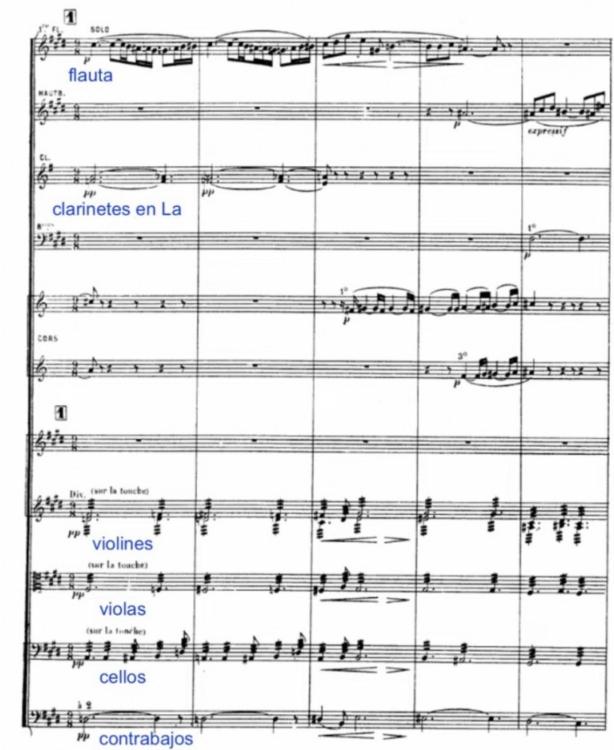
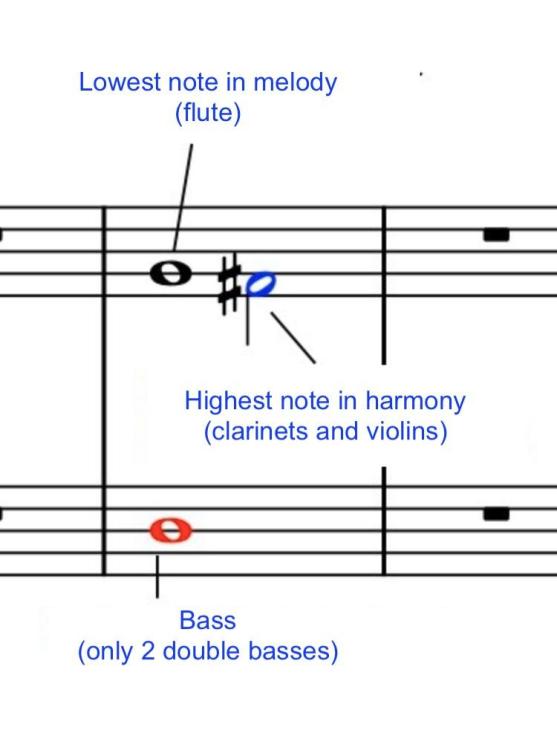

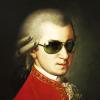

.thumb.jpg.c0a72d70ca19ec34c5702ec7e7951f37.jpg)
